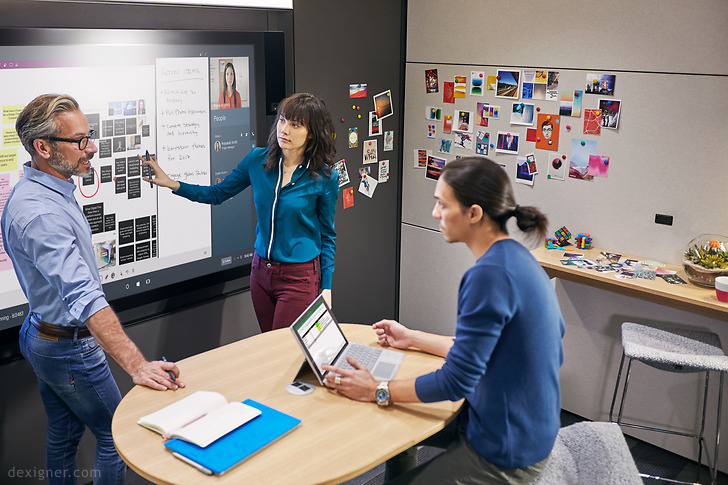The growth of cloud, especially the resounding response Microsoft is getting for its Office 365 in the business user space, has enabled the company to go deeper and wider into serving enterprise customers. The Satya Nadella-led company recently announced a partnership with Steelcase, a more-than-a-century-old workspace solutions company based in Michigan.
Microsoft will be working with Steelcase to modernise their workspace by integrating Microsoft Surface devices. Yesterday, the companies together unveiled five new “Creative Spaces”. During the first phase of the collaboration, Steelcase will be showcasing these workspaces in the the company’s Worklife Centers in New York City, San Francisco, Chicago, Los Angeles, Munich and London, with additional markets expected to be added soon.
“We are also happy to announce that starting today select Steelcase dealers in the United States and Canada will start reselling Surface Hubs to their customers, with the United Kingdom and Germany coming online this Summer. Together we plan to announce additional markets in 2017.” Microsoft
Microsoft seems to have much deeper plans for its office space efforts.
The company noted in its press release that it will be soon announcing new, technology-enabled workspace solutions built on Microsoft Azure IoT.

We reported back in August 2016 that Microsoft had announced a service where businesses could “rent” Surface devices for their offices, rather than having to buy them outright. At the time, we speculated on such a service being widely available to individual users, and that Apple would do well to take a cue from Microsoft.
See: Microsoft Introduces “Rent-a-Device” for Surface Products
Microsoft isn’t taking it to the general public yet, but their strategy is clear: put the customer in the middle, and create a network of products that they will come to depend on for decades to come. And that customer right now is the enterprise employee.
The Steelcase partnership is taking that strategy one level deeper, is all. By going the extra mile and creating physical workspaces for their clients, Microsoft is putting that strategy into action in a definitive way.
In a sense, this is a case study in the making. If Microsoft can give a client the entire gamut of what a corporate employee needs – the platform (Windows 10) the software (Office 365, Dynamics 365, PowerBI), the hardware (Surface, HoloLens), the scalability (Azure) and the collaborative capability (Skype, Teams) – then Steelcase has more than a century of know-how to make it all fit into a thoughtfully designed workspace.
Granted, this may not see widespread adoption, but we see it as an immense value-addition to Microsoft’s suite of services.
Thanks for reading our work! We invite you to check out our Essentials of Cloud Computing page, which covers the basics of cloud computing, its components, various deployment models, historical, current and forecast data for the cloud computing industry, and even a glossary of cloud computing terms.



